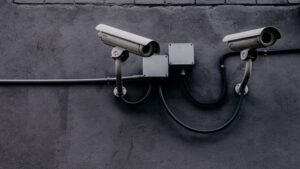
Your garage door is often the first thing that visitors see when they arrive at your home. A well-maintained door not only adds to the curb appeal but also ensures the safety and security of your vehicle and belongings. However, wear and tear are inevitable, and over time, even the sturdiest doors can encounter issues that turn a beautiful entryway into a source of frustration.
Whether it’s a stubborn door that refuses to open, strange noises during operation, or a complete malfunction, understanding the basics of garage door repair can help you tackle these problems head-on. In this guide, we will explore common issues, provide practical solutions, and share tips to keep your garage door functioning smoothly. Transform your entryway and regain peace of mind as you navigate through the essentials of garage door care and repair.
Common Garage Door Issues
One of the most frequent problems homeowners face with garage doors is malfunctioning openers. This can manifest as the door not responding to the remote control or keyless entry pad. Sometimes the opener may need a simple battery replacement, while other times it could indicate a more significant issue, such as a faulty motor or misaligned sensors. Regular maintenance can help identify these issues early and ensure the opener works efficiently.
Another common issue is the door getting stuck while opening or closing. This can occur due to various reasons, such as a buildup of debris on the tracks, worn-out rollers, or misalignment. Inspecting the tracks and rollers regularly can prevent these problems. Ensuring the tracks are clean and free from obstacles will help the door operate smoothly, avoiding any interruptions in your daily routine.
Lastly, springs are crucial for the functioning of a garage door, and they can experience wear and tear over time. Broken or weakened springs can cause the door to become unbalanced, leading to difficulties in opening or closing. If you hear a loud bang or notice the door feels heavy, it may indicate a spring issue. Because replacing garage door springs can be dangerous, it is essential to seek professional help to resolve these matters safely.
Step-by-Step Repair Guide
Start by assessing the garage door and its components. Check if the door opens and closes smoothly or if it is making unusual noises. Inspect the springs, cables, rollers, and tracks for any signs of damage or wear. If you notice any broken parts, it is essential to replace them before attempting further repairs. Ensure to disconnect the garage door opener to prevent any accidental activation while you are working.
Next, focus on the tracks. Clean the tracks of any debris that may be obstructing the door’s movement. Lubricate the rollers and tracks with a silicone-based lubricant to enhance their functionality. If the door is off track, carefully lift it back onto the track using your hands, making sure it is centered properly before re-testing its movement. Be cautious as this task can be tricky, and safety should always come first.
Finally, check the opener and remote control. Replace the batteries in the remote control if you encounter any issues when trying to open or close the door. Also, inspect the photo-eye sensors located at the bottom of the garage door frame; they should be aligned and free from obstruction. If the door still fails to operate, it may be time to consult a professional for further diagnostics and repairs. To ensure the longevity and functionality of your garage door, it’s important to seek Garage Door Repair Solutions when you encounter issues, as this can help maintain both the aesthetic appeal and security of your home.
Tools and Materials Needed
When preparing for garage door repair, gathering the right tools is essential to ensure a smooth process. Basic tools typically required include a power drill, screwdriver set, wrenches, and pliers. These will help you remove and secure various components of the garage door. A level is also important for ensuring that your door is properly aligned after adjustments.
In addition to basic tools, specific materials are often necessary for repairs. Replacement parts such as rollers, hinges, and springs are commonly needed depending on the nature of the repair. Make sure to assess which parts are worn out or damaged before beginning the repair. Having the correct replacements on hand will save you time and prevent delays.
Safety equipment should not be overlooked during garage door repair. Items like safety goggles and gloves are essential to protect yourself from potential injuries. If you’re working with heavy components or tensioned springs, consider having a second person nearby to assist. Prioritizing safety will help you complete the repair more effectively and confidently.
Preventive Maintenance Tips
Regular maintenance is key to ensuring the longevity and proper functionality of your garage door. Start by inspecting the door’s components, including the springs, cables, rollers, and tracks. Look for any signs of wear or damage, such as frayed cables or rust on the springs. Tighten any loose screws and bolts, as they can lead to misalignment and more expensive repairs down the line.
Lubrication is another crucial aspect of preventive maintenance. Apply a silicone-based lubricant to all moving parts, including the hinges, rollers, and tracks. This will help reduce friction and wear, ensuring that your garage door opens and closes smoothly. Avoid using grease, as it can attract dust and dirt, which may cause further issues over time.
Finally, test the safety features of your garage door regularly. Ensure that the auto-reverse function works properly by placing an object in the door’s path and observing whether it reverses on contact. This is essential not only for the functionality of the door but also for the safety of you and your family. By following these maintenance tips, you can prevent major issues and extend the life of your garage door.
















